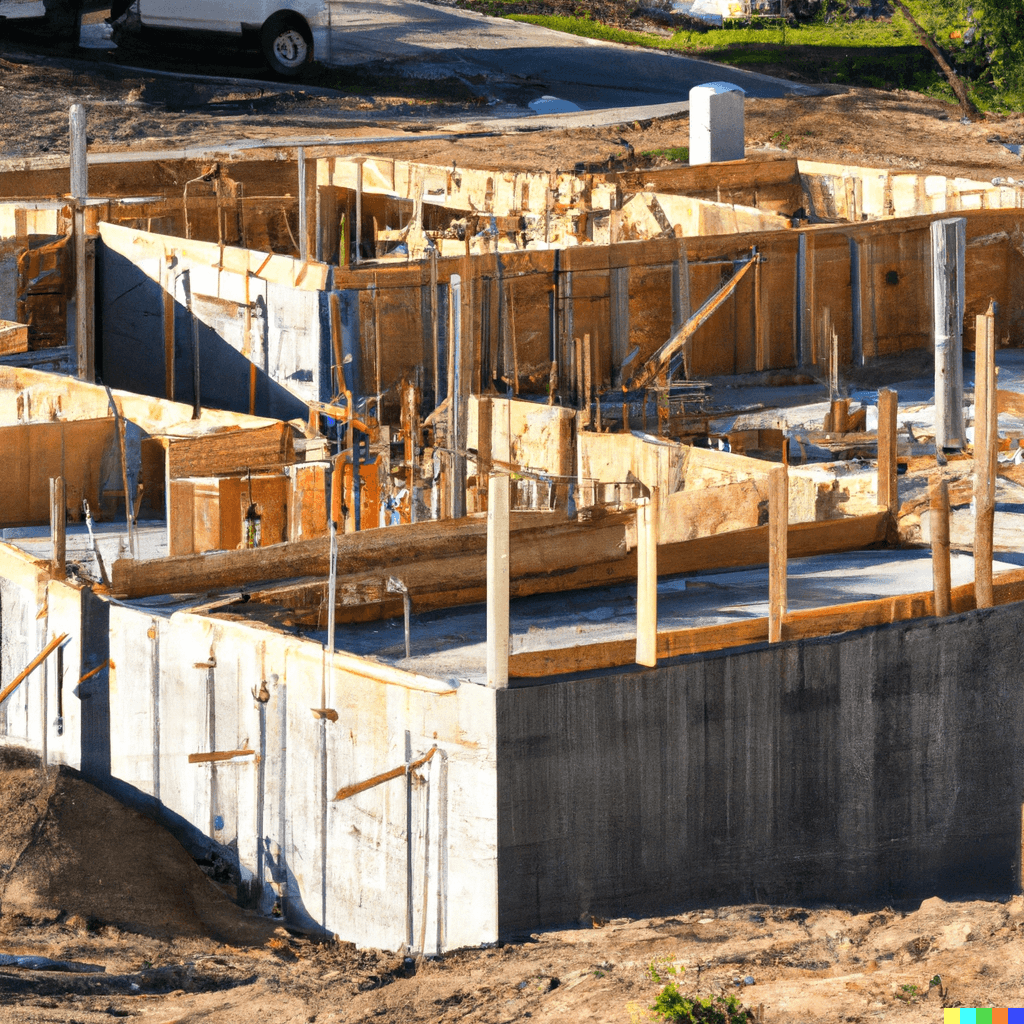The Importance of Proper Drainage for Your Home’s Foundation

The foundation of your home is essential to its structural integrity, and it’s important to protect it from damage caused by moisture. Recently we’ve become no strangers to heavy rainfall, and it’s crucial to ensure that your home’s foundation has proper drainage to protect it from water damage. In this blog post, we’ll discuss the importance of proper drainage for your home’s foundation and how you can achieve it.
How Moisture Can Damage Your Home’s Foundation
Moisture is one of the primary causes of foundation damage. When soil becomes saturated with water, it can swell and shift, causing your foundation to move and crack. As the foundation shifts, it can create additional damage to the structure of your home, including cracks in walls, ceilings, and floors. Additionally, excess moisture can cause mold growth, which can also weaken the foundation.
The Effects of Improper Drainage
If your home’s foundation lacks proper drainage, it is vulnerable to damage from excess water. Water can collect around the base of your home, leading to problems such as:
- Soil Erosion: Water can erode the soil around your foundation, causing it to become unstable and creating gaps that can cause your foundation to shift.
- Hydrostatic Pressure: Water buildup around your foundation can create hydrostatic pressure, which can push against your foundation and cause it to crack.
- Basement Leaks: Water can enter your basement through cracks and gaps caused by improper drainage, leading to mold growth and other damage.
- Foundation Cracks: The constant presence of moisture can cause your foundation to crack and weaken over time.
The Types of Drainage Systems Available
There are several types of drainage systems available to homeowners each designed to address specific needs. Here are some of the most common drainage systems:
- Soakage Trench: A soakage trench is a trench filled with gravel or other porous material and a perforated pipe that is designed to direct water away from your foundation. It is an effective solution for homes with standing water issues.
- Surface Drainage: Surface drainage systems use channels and drains to collect and redirect water away from your home. This is an ideal solution for homes with flat gardens or those with standing water issues.
- Sump Pump: A sump pump is a pump that is installed in the lowest part of your basement or crawl space. It is designed to collect water and pump it away from your foundation.
- Gutter and Downpipe System: Gutters and downpipes are designed to collect rainwater from your roof and direct it away from your home’s foundation. This is an effective solution for homes with sloped roofs.
- Detention tank: A detention tank is is an underground storage unit that collects and stores excess water, which then slowly percolates into the main storm water system
Maintaining Your Drainage System
Once you’ve installed a drainage system, it’s important to maintain it to ensure that it continues to function properly. Here are some tips.
- Regular Inspections: Inspect your drainage system at least twice a year, and more often during heavy rain periods. Look for signs of wear and tear, clogs, and other issues that can cause your drainage system to fail.
- Cleaning: Remove debris from gutters, downspouts, and drains regularly to prevent clogs and backups.
- Repairs: If you notice any damage to your drainage system, such as cracks in pipes or gutters, have it repaired as soon as possible.
- Landscaping: Ensure that your garden is properly graded away from your foundation, so that water flows away from your home.
- Waterproofing: Consider applying a waterproofing sealant to your foundation to protect it from moisture damage.
Proper away from your foundation, you can prevent soil erosion, reduce hydrostatic pressure, keep your basement dry, and preserve the structural integrity of your home.
drainage is essential for protecting your home’s foundation from moisture damage. By directing water
There are several types of drainage systems available, each designed to address specific needs. Plus important to maintain your drainage system to ensure that it continues to function properly over time. With the right drainage system in place and proper maintenance, you can protect your home’s foundation from damage and enjoy peace of mind knowing that your home is safe and secure, even during heavy rainfall.
Similar Posts
Drainlayer Auckland: Essential Drainage Checks for Spring
As winter’s heavy rains begin to ease, smart property owners know this is the ideal time for drainage system assessment. At Ninja Drainage and Civil,…
Read MoreDrainlayer Auckland: Solving Recurring Winter Flooding Problems
If your property floods every winter, you’re not alone. Many Auckland property owners face this frustrating cycle year after year. At Ninja Drainage and Civil,…
Read MoreDrainlayer Auckland: Understanding Drainage System Age and Replacement
Many Auckland properties still rely on drainage systems installed decades ago. At Ninja Drainage and Civil, our certified drainlayers with over 25 years of experience…
Read More April 27, 2023
April 27, 2023  Tips & Tricks
Tips & Tricks